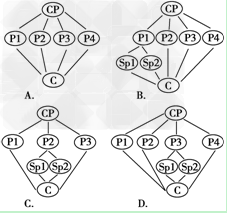阅读理解
Newspapers are one method of bringing the news to the public. Reporters, photographers,
correspondents, and editors are some of the people who create newspapers. They are known as
journalists.
Reporters are journalists who go out and get the news. They attend meetings. They cover events
such as court cases, plays, and sporting events. They interview people to get their views about what
is going on. Reporters must be able to write a story quickly so as to meet a deadline. People do not
want to read old news.
Theywant to know what is going on as soon as it happens. Reporters
sometimes phone or email their notes and quotations (引用语) to the paper from the scene. A
reporter in the office then writes the story.
A "stringer" is a parttime reporter who works when called on. A fire might break out in one part
of town. An editor may ask a stringer who lives near the scene to cover the story.
Reporters often work with photographers, or photojournalists. Photojournalists take the pictures
that illustrate (图解) the stories in a newspaper. They have to edit their pictures in time for them to
appear with the story.
A correspondent is a journalist who covers the news in a particular place or on a subject that he
or she has special knowledge in. Large newspaper groups have correspondents in foreign countries
to report the news there. A paper may have a correspondent who covers just medical news.
An editor is a journalist who works at a desk in a newspaper office. Editors prepare the reporters'
stories to be printed in the paper. They decide which story is most important and gets the frontpage
headline. They decide which pictures to use. Editors do not often write the news, but they do write
editorials (社论) in which they state their views on a topic or an issue.
People who work as journalists have some things in common. They are curious, they like to write,
and they have a "nose for news". They can spot news as it happens. They know what people want to
read about.
1. The underlined word "They" in Paragraph 2 refers to________.
A. readers
B. journalists
C. reporters
D. stringers
2. According to the passage, both the reporter and the editor________.
A. usually work in the office
B. decide which pictures to use
C. have the ability to discover news
D. often write editorials for their paper
3. The passage is mainly written to________.
A. introduce different posts and duties of journalists
B. describe the characters of journalists
C. explain how the news is collected
D. show how reporters work
4. Which of the following shows the structure of the passage?

CP:Central Point P:Point Sp:Subpoint (次要点) C:Conclusion